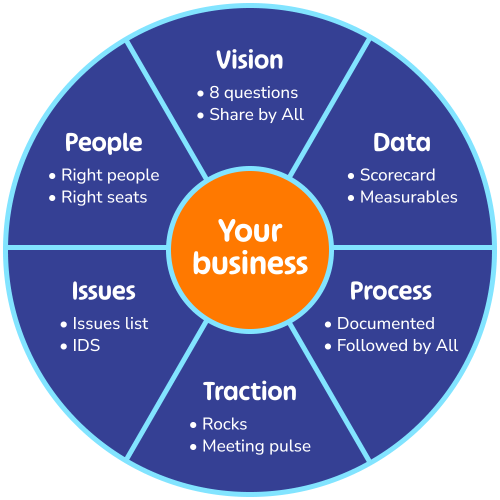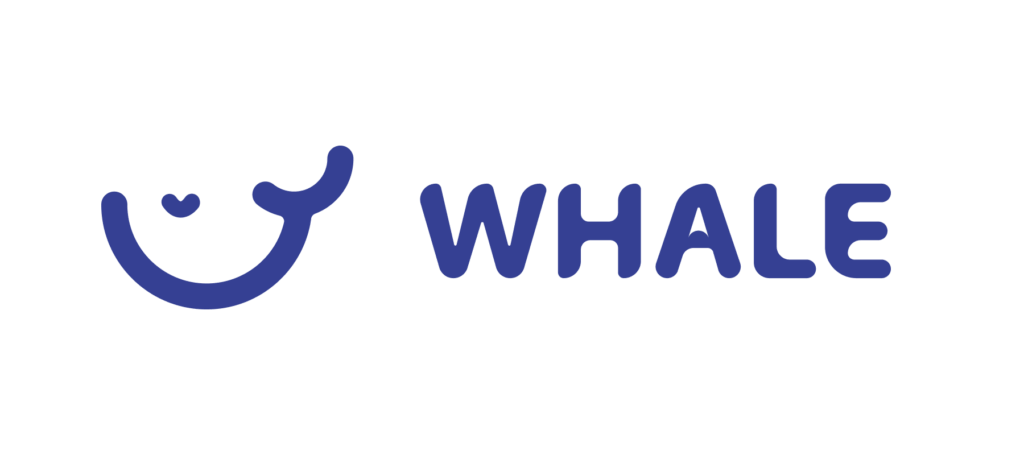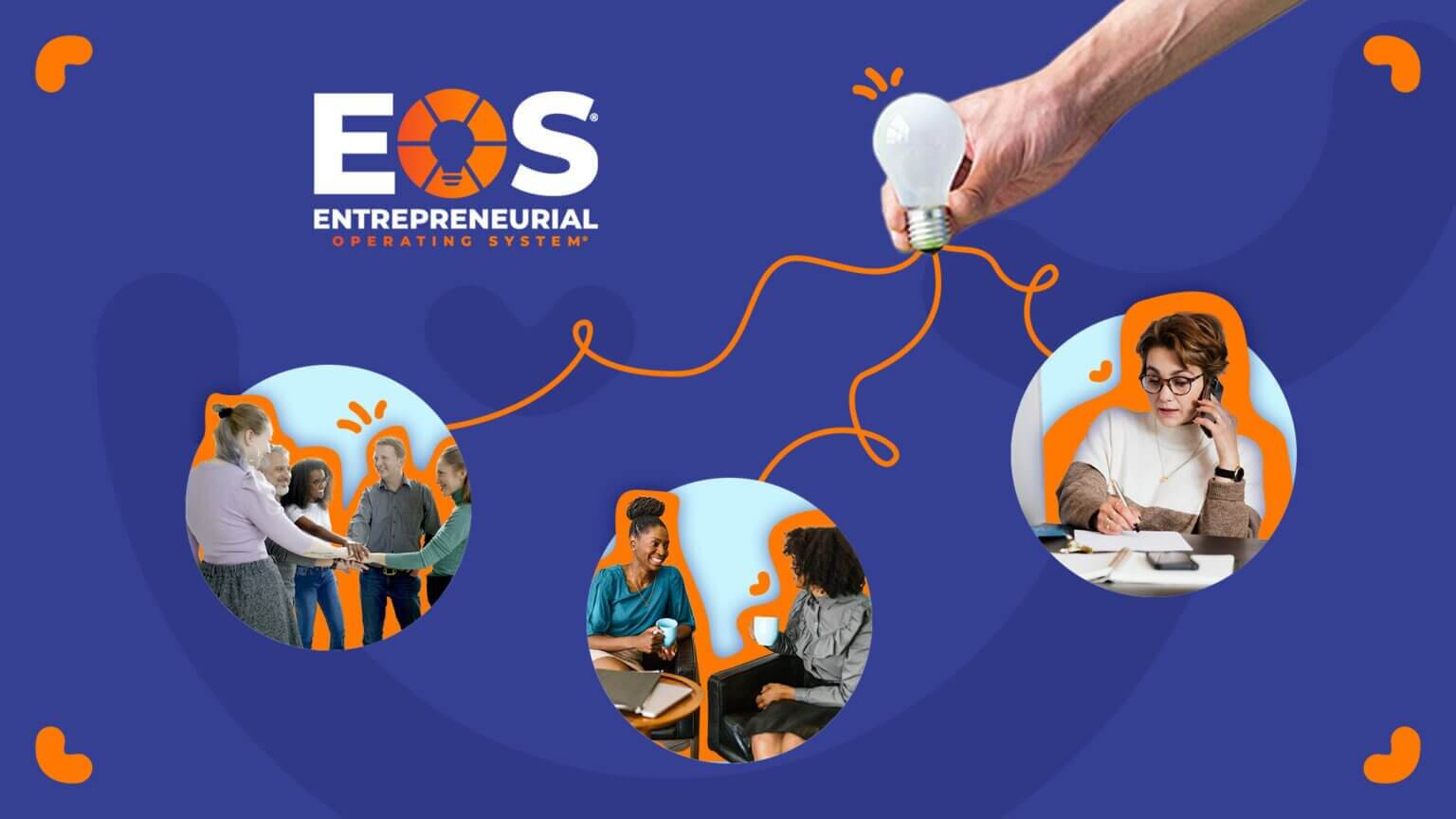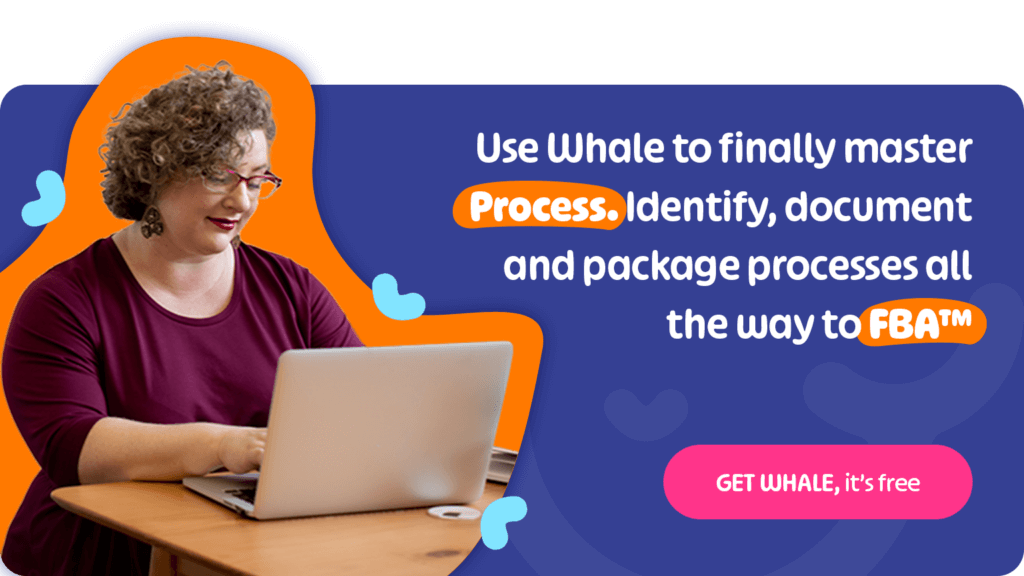So you’re just born an entrepreneur and you start a business and run it right?
No. Not exactly.
Being an entrepreneur can be overwhelming.
Every entrepreneur needs a system on which to run their business. That’s why we’re sharing our insights on the Entrepreneurial Operating System® or EOS today.
Let’s jump in to learn what it is and how it could help you in your business.
What is the Entrepreneurial Operating System®?
The Entrepreneurial Operating System® has inspired the masses. But what exactly is EOS®?
EOS is a set of concepts and tools that empowers entrepreneurs to reach their business goals through a proven system.
The Entrepreneurial Operating System (EOS) model was created by Gino Wickman and was based on Wickman’s own experience as a successful entrepreneur.
Gino’s aim was a simple one. He wanted to help organizational leadership teams get what they want out of their businesses and to gain traction.
In fact, he wrote a book called Traction.
And with over 1 million books sold and more than 100K companies running on EOS, it’s safe to say his vision has inspired the masses.
What are the 6 Components of EOS®?
If you’re still wondering: ‘How do I explain EOS?’, it’s best to start by explaining the EOS Model® and the Six Key Components™; Vision, Data, Process, Traction, Issues and People.
Here’s a short description of each of the components of EOS:

EOS Component #1: Vision
"When everything is important, nothing is important.” ~ Gino Wickman in his book Traction.
It’s for this reason, EOS has a component dedicated to the vision for the organization.
It’s all about getting everyone on the same page, developing a plan and focusing on the key milestones along the way.
According to EOS, having a vision puts you firmly in the driving seat, but it also gives your team a fixed place to return to if they ever lose their way.
How we do this at Whale?
We have a business purpose statement and set quarterly rocks or achievements along the way.
EOS® Component #2: People
EOS states that to bring any vision to life, you need the right people around you. We’re not just talking in the boardroom, either. Every position you recruit for needs to be filled with someone who understands your vision, believes in it and promotes it.
Remember, there may be a lot of great candidates out there. But they might not be great for your company and your vision.
So when you find someone who’s the perfect fit, make sure to optimize their employee experience from day one. 🥰
How we do this at Whale?
We make sure to hire the best people for the role from the get go! Check out our recruiting video;
EOS® Component #3: Data
You know the line, "It’s not personal. It’s strictly business." from The Godfather?
Well, when it comes to living The EOS Life®, Michael Corleone hit the nail on the head.
EOS states that basing business decisions on opinions, feelings or personalities will get you nowhere. But sticking to a few objective and trackable metrics will keep you way ahead of the game.
How we do this at Whale?
We have a dashboard which is tracked weekly and each person is accountable for certain numbers within our dashboard.
EOS® Component #4: Issues
No successful business has a smooth ride. Especially not entrepreneurial businesses where solving issues may seem like a daily challenge.
A core component of EOS is mastering the art of uncovering issues, solving them, and learning from the experience.
How we do this at Whale?
We track our issues in our weekly L10 meetings.
EOS® Component #5: Process
Process is the glue that holds any and every business together. It’s the reason that we built Whale!
This component is all about identifying, simplifying, and documenting your core processes for company-wide clarification. 💡
Slay the Process Component, and watch your efficiency soar and profitability skyrocket.
How we do this at Whale?
We use Whale of course! Chat to us about how we can help you and your business, master the process component.
EOS® Component #6: Traction
All of the above is great, but if you don’t put the wheels in motion, you’re never going to reach your destination. EOS states you need to gain traction in order to scale.
That means filtering your roadmap to each business level, holding everyone to account (including yourself), and executing each leg of the journey with speed and skill.
How we do this at Whale?
We use a dashboard to keep track of our numbers and tasks. Each person in the organization is responsible for their numbers and tasks. This helps keep us on track.
When to adopt EOS® in your business?
If you’ve identified a business model that works and you have 10-250 employees but are still battling to scale or feel like every day is chaos (isn’t it always in entrepreneurship?), perhaps it’s time to consider implementing EOS in your business?
"The death of most good businesses is that they focus on the wrong initiatives or let distractions consume them to the point where nothing moves forward." (Forbes)
EOS is a guaranteed way to from chaos to structure and from chaos to clarity and will help you identify the right goals and rocks, get your people taking accountability, have visionaries and integrators working together, solving challenges effortlessly and ultimately systemizing your business for growth.
Tell tale signs you need EOS® in your business?
Do you identify with some of the following statements? Implementing EOS may help you turn things around.
- My business feels chaotic and it feels like my business is running me.
- I’m burnt out and I feel like I can never take a break.
- I’m working too many hours and just not making enough profit for all the time and energy I put into the business.
- I’m super frustrated with my staff and the people I work with and how they don’t take accountability in the business.
- I have no idea how to unlock the next level of growth and can’t seem to get Traction.
- I’ve listened to every business guru but I just can’t seem to get it right.
Why use the Entrepreneurial Operating System?
Ultimately at Whale, we use EOS to help us stay on track. Each of the six components is factored into how we operate and how we achieve and track our forward momentum.
We spoke to Dean Breyley, Community Leader (Europe) & Expert EOS Implementer on why companies should use EOS.
At Whale, we’ve experienced the benefits of running on EOS, but with over 100K companies running on EOS, what are the benefits that keep them coming back?
Well, to start with, here are just a few:
💫 Alignment refinement
By getting crystal clear on your vision and doubling down on your process implementation, you’re taking the guesswork out of your business.
Instead of employees constantly asking the same questions (or, worse, simply doing whatever they want), implementing EOS sets everyone on the same path with the same goals.
And if there are any tricky decisions along the way, the team can revert to the vision and choose the route most aligned with getting them to that end destination.
In real terms, that EOS-driven alignment means:
- An end to vision procrastination: There’s external pressure to figure it out, document it, scale it, and pursue it fiercely.
- Building a rockstar team: With a vision in mind and a company aligned, you can choose people from day one who will share that vision and promote your values.
- Enhanced employee focus: Now everyone knows where the company is going, their role, and how to ace their part, they can crack on and get you there.
💫 Absolute accountability
Using EOS® to identify, discuss and cement your vision enables company-wide transparency. And with such open and frank conversations on the agenda, a culture of accountability is born.
Chasing your vision is like running a relay race. Each employee needs to understand their role within the team, be motivated to execute it and receive feedback on their progress.
Accountability is all about fostering a culture of ownership, cutting the excuses, managing expectations, and simplifying decisions by aligning with—you guessed it—the company vision.
Ace accountability at every level, and watch your execution speed (and revenue) accelerate.
💫 A+ organization
You know that feeling when you’ve just tidied a room that’s been driving you crazy for months? That ‘aha’ moment? 👌
Imagine that feeling on a company-wide scale. (That’s one big exhale right there!)
Simply put, implementing EOS gets you ‘unstuck’.
It does that by making you organized, healthy, and functional, especially within your leadership team. Their culture, example, and successes set the tone for the rest of the organization.
EOS promotes tools and processes that allow you to strengthen that culture. From strategic meetings to tracking systems and data-driven analysis techniques.
💫 And solving issues for breakfast
Don’t let anyone fool you. Entrepreneurship is all about learning to solve challenges.
You and your team have got to learn to solve issues as they arise.
How to use EOS® to scale 🚀
Of course, every business needs to know and understand its customers down to understanding their personas. But unless you organize your business correctly internally, you’ll not be able to deliver the best service to your customers.
We’ve run Whale on EOS over the past couple of years to help us get organized and maintain accountability in the business. It’s helped us get the right people in the right seats and focus on the right goals.
We use EOS to help us hire the right people, to set goals and even to run our meetings. After all 15% of an organization’s time is spent in meetings — and if they’re not achieving anything, then you’re waving goodbye to crucial time and money. 💸
EOS is part of the reason we started Whale. We realized that the Proces component needed a pragmatic system to help business owners get organized.
💫 Top Tip: Use an EOS® Implementer®
We highly recommend that every business owner read the book Traction but implementing EOS needs a systematic approach.
Although you can self-implement, recruiting an EOS Implementer can set you up to win.
An EOS Implementer is someone who uses their experience to help businesses excel at the Six Key Components — teaching, facilitating, and coaching along the way.
If you decide to work with an Implementer, the first step is to schedule a 90-minute meeting. Your implementer will learn all about your company, how the tools work, the outcomes they could achieve for you, and share their proven process for working with companies that run on EOS.
They will then work with you to determine the right next steps for your business.
Why use EOS® is to hit your goals?
Whatever sector you’re in, whatever stage you’re at, whatever size you are, EOS® could be just the thing to take you to the next level.
Because as a business leader, you likely already know the following steps to take. But whether it’s procrastination, prioritization, or the juggling act that comes with building the plane as you’re flying it, you may likely be getting in your way.
But by breaking down those big steps and using logical tools to implement a significant change, those giant leaps and big goals seem that little bit less daunting and a heck of a lot more achievable.
And at the end of the day, hitting those goals is what EOS® is all about.
How to master process in EOS®?
Process makes entrepreneurs nervous. 🥵
They typically tend to think 72-page documents and lots of red tape. But actually process is what sets entrepreneurs free and gives them the freedom to take vacations, to empower their teams and to scale.
The main points to remember in regards to mastering the Process Component™ include;
- You’ve got to commit to getting processes identified, documented and packaged.
- Don’t try to document everything. You simply need to document 20% of the processes (activities) that result in 80% of the results.
- Process don’t matter unless they’re FBA (Followed by All).
Why process matters?
We built Whale to help companies master the Process Component™.
We view process as one of the most essential components because Process;
- is the glue that helps people stay accountable and committed to the business mission.
- can ultimately help you in getting your startup acquired.
- is a key ingredient in the continuous improvement in your business.
- helps you get to the next level of growth.
And yet the EOS Process Component™ is often one of the most neglected parts of a company that is struggling to grow but also one of the most essential tools for scaling.
Where to get started with process?
- Set goals and outcomes
- Identify where to document processes
- Identify core processes
- Assign responsibility
- Document your chosen department’s processes
- Share the documented processes with team members
- Set up a documentation review schedule
And review your documents to keep strengthening your processes.
Learn more - Additional resources on all things EOS
So this sounds really interesting but you’d still like to read up more about What is EOS?
Here are a few resources you might find interesting;
- Got People Problems? How the EOS People Analyzer Can Help
- Vision / Traction Organizer – The complete guide
- How to gain traction by supercharging your meetings
- How to systemize your business process?
- The Top 10 Processes every company needs
- How to apply the 80-20 Rule in your business
Ready to create the A+ processes you’ll need to succeed with EOS?
Take our free assessment to see how ready your business is to systemize and grow.
FAQs related to EOS®
How does EOS differ from traditional management methods?
EOS differs from traditional methods of management in that it follows a strict process. With EOS, you get;
- A holistic Approach: EOS looks at the business as a whole, integrating all aspects to work cohesively rather than in silos.
- Simplicity: The system is designed to be straightforward and practical, making it easier for all team members to understand and implement.
- A focus on Vision and Values: EOS places a strong emphasis on aligning the entire company around a shared vision and core values, which is not always a central focus in traditional methods.
- Data-Driven Decision Making: While traditional methods might rely more on intuition or hierarchical decisions, EOS encourages decisions based on objective data and metrics.
- Meeting Rhythm (Level 10 Meetings): EOS introduces a structured meeting rhythm known as "Level 10 Meetings" that aims to maximize efficiency and problem-solving, contrasting with the often less structured or inconsistent meetings in traditional settings.
What are common challenges businesses face when adopting EOS?
Whilst EOS offers the perfect solution for unlocking business growth, adopting it may present some challenges.
These include;
- Cost: Implementing EOS will cost you from $14 (for the paperback version of Traction) to $50,000+ per year for an EOS Implementer. Typically, an EOS Implementer™ facilitates client sessions for two years.
- Size of the business: The Entrepreneurial Operating System® is ideal for privately held entrepreneurial small to medium-sized businesses that are growth-minded, with 10-250 employees.
- Cultural Shift Required: Shifting to a culture of openness, accountability, and discipline can be challenging, particularly in organizations used to top-down decision-making or a lack of transparency.
- Resistance to Change: Employees and even management may resist the new processes, tools, and the emphasis on accountability. You may need to adopt change management.
- Learning Curve: Despite its simplicity, there is a learning curve to effectively implement and sustain EOS practices, especially in mastering the tools and habits like the EOS Traction component.
- Consistency and Patience Needed: Organizations might face challenges in consistently applying the EOS model and maintaining patience, as the benefits of EOS accrue over time and with persistent effort.
How does EOS promote accountability and alignment within organizations?
EOS is ALL about structure to promote accountability and alignment. This includes having;
- Clear Roles and Responsibilities: EOS emphasizes defining clear roles and responsibilities for each team member, which helps in fostering accountability.
- Scorecards and Measurables: By using data and measurable outcomes, EOS makes performance transparent, allowing for real-time adjustments and accountability.
- Regular Check-ins (Level 10 Meetings): The regular meeting rhythm ensures issues are addressed promptly, and team members are accountable for their actions and results.
- Shared Vision and Goals: Aligning the entire organization around a shared vision and clear goals ensures that everyone understands how their work contributes to the overall success of the business, promoting both alignment and accountability.
Providing ongoing training is one way to keep your team aligned. You can use specialist software like Whale for employee onboarding and training to manage this process.
Get documenting & training NOW
What is your greatest challenge?
SOP & Process Documentation
Use Whale to create SOP & Process Documentation and centralize everything in an easily accessible single source of truth.
Employee Onboarding & Training
Whale is the fastest way to get your team aligned. Discover how Whale boosts team performance and ensures new hires excel from the get-go.
Companies on EOS ®
Whale is the all-in-one system for teams running on EOS® to help document your processes, train your teams, and build a foundation for growth.








